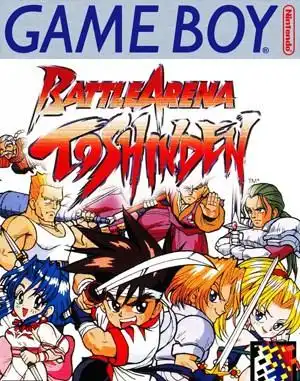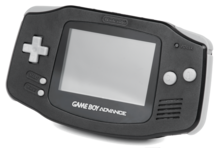Remember the dawn of 3D gaming? When polygons were sharp, textures were... optional, and fighting games were making the leap from 2D sprites to fully rendered characters duking it out in a 3D space? For many early PlayStation adopters, one game stood out as a shining example of this new era: Battle Arena Toshinden.
Released shortly after the console's launch, Battle Arena Toshinden wasn't just a fighting game; it was a technical showcase. It promised the future of the genre, moving beyond the side-scrolling plane of classics like Street Fighter and Mortal Kombat into a world where you could actually sidestep your opponent. Let's take a trip down memory lane and see how this pioneering title holds up and why it still holds a special place in retro gaming hearts.
Stepping into the Arena: The PS1 Original
When Battle Arena Toshinden first hit the scene, it was visually stunning for its time. Character models were relatively high-polygon (for 1995!), stages had a sense of depth, and special moves filled the screen with flashy effects. It felt undeniably next-gen.
The core gameplay was familiar yet different. You had your standard light, medium, and heavy attacks, along with special moves tied to directional inputs and buttons. But the game's defining feature was the sidestep. With a press of the shoulder buttons, you could quickly dodge left or right, moving into the background or foreground to avoid attacks and reposition yourself. This added a new tactical layer that 2D fighters simply couldn't offer.
Another unique mechanic was the ring-out. While some 2D games had stage boundaries, Toshinden featured arenas with actual edges. Knocking your opponent out of the ring was a legitimate way to win, often leading to frantic scrambles near the perimeter. And yes, you could accidentally fall out yourself!
Each character also had a "Desperation Attack," a powerful super move available only when your health bar was flashing red. These were often over-the-top and satisfying to land, adding to the game's arcade-like flair.
Characters and Their Reasons to Fight (Sort Of)
Like any good fighting game, Battle Arena Toshinden featured a colorful cast of characters, each with their own weapon and fighting style. From the protagonist Eiji Shinjo and his katana to Sofia the whip-wielding detective, the roster was diverse.
The plot revolved around a mysterious tournament hosted by an equally mysterious "Secret Society," with each fighter having their own motivations – revenge, seeking truth, proving strength, or just looking for a good time (probably). While the story wasn't deep, the character designs by Tsukasa Kotobuki were memorable and contributed significantly to the game's appeal.
Beyond the PlayStation: Ports and Variations
While the PlayStation version is the most iconic, Battle Arena Toshinden wasn't confined to Sony's console. It saw life on several other platforms, each offering a slightly different experience:
- Sega Saturn (Toshinden Remix): This version added an exclusive character (Cupido) and, notably, a story mode with character backstories and voice acting, giving the thin plot a bit more substance. It also featured anime portraits on the character select screen.
- PC (DOS): Perhaps the most interesting port for modern retro gamers. Developed by Digital Dialect, this version offered higher resolutions and even network multiplayer! It also famously included Earthworm Jim as a guest character, bizarrely using Rungo Iron's moveset. The PC version is available digitally today, making it the easiest way to play legally on modern systems.
- Game Boy: A surprisingly competent 2D demake in the "Nettou" series (like the Nettou King of Fighters games). It featured chibi-style characters but managed to capture the feel of the game, even including the ring-out mechanic and unlockable characters. A solid effort considering the hardware limitations.
- PSN / PlayStation Classic: The original PS1 version has seen re-releases on digital storefronts like the PlayStation Store (for PS3/PSP/Vita) and was included on the PlayStation Classic mini-console, though the latter used the slightly slower PAL version.
The Verdict: Reception and Legacy
Battle Arena Toshinden's initial reception was largely positive, especially regarding its visuals and the novelty of 3D movement. Critics praised the sidestep mechanic and the flashy special moves. It was a strong launch title for the PlayStation and sold well, even making it into the "Greatest Hits" range in the US.
However, as the 3D fighting genre matured with titles like Tekken 2 and Virtua Fighter 2, Toshinden's gameplay depth began to be questioned. Retrospective reviews often point out simpler controls and combat systems compared to its contemporaries. Some later reviews were less kind, calling it more flash than substance.
Despite the mixed legacy, Battle Arena Toshinden remains an important game. It was a pioneer in bringing 3D fighting to home consoles and helped define the early look and feel of the PlayStation era. It's a nostalgic touchstone for many who grew up with the console.
Where to Find Battle Arena Toshinden Today
Want to revisit this slice of 90s fighting history?
- Digital: The PC (DOS) version is available for purchase on GOG.com, bundled with DOSBox for easy play on modern Windows machines. This is arguably the most accessible legal option.
- Emulation: The PS1, Saturn, and Game Boy versions are all playable via emulators like DuckStation, Mednafen, and mGBA, respectively (requires obtaining ROMs/ISOs from your own collection).
- PlayStation Classic: If you own the mini-console, the PAL version is included.
- Original Hardware: Dust off that old PlayStation, Saturn, or Game Boy if you still have the carts or discs!
Frequently Asked Questions about Battle Arena Toshinden
Q: Is Battle Arena Toshinden a good game? A: It depends on your perspective! For its time (1995), it was visually impressive and introduced key 3D movement concepts like the sidestep. Compared to later, more refined 3D fighters like Tekken 3 or Soulcalibur, its gameplay is simpler. It's best viewed as a pioneering, nostalgic title rather than a deeply competitive fighter today.
Q: What platforms was Battle Arena Toshinden released on? A: The original game was released on PlayStation (PS1). It was later ported to Sega Saturn (as Toshinden Remix), PC (DOS), and Game Boy. The PS1 version also saw re-releases on PSN and the PlayStation Classic.
Q: Is the PC version different from the PS1 version? A: Yes, the PC port by Digital Dialect has several differences. It supports higher resolutions, included network multiplayer, and famously featured Earthworm Jim as a guest character.
Q: Can I buy Battle Arena Toshinden digitally today? A: Yes! The PC (DOS) version is available for purchase on GOG.com, making it easy to play on modern computers.
Conclusion
Battle Arena Toshinden might not be the deepest fighting game ever made, and its graphics have certainly aged, but its importance in the history of 3D fighters and its place as an early PlayStation icon are undeniable. If you're looking for a hit of 90s nostalgia, a look at the origins of 3D fighting on consoles, or just want to see Earthworm Jim throw down with a samurai, giving Toshinden a spin is a trip worth taking.


